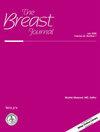Screening of Breast among Women: A Cross-Sectional Study in Nepal
Abstract
Background. Breast cancer ranks as the second most prevalent malignancy among women in Nepal. This cancer has a high likelihood of cure, if detected early. Therefore, it is imperative to emphasize awareness and screening for breast cancer in Nepal. It indeed underscores the importance of clinical breast examination. The study aims to find the disease burden, association of abnormal breast condition with sociodemographic variables, and the need for change in the breast cancer screening protocol. Methods. A cross-sectional study was conducted from July to September 2023 on 100 female participants who were older than 18 years. Data were collected through face-to-face interviews using a structured questionnaire. The chi-square test was used to compare nominal variables while the independent sample t-test and the paired sample t-test were used to compare nominal and continuous variables. Results. The findings of the study showed that 19% of all participants complained about abnormal breast, out of which 31.7% reported lumps, 26.31% reported discharge , another 26.31% reported pain, and the remaining 15.7% reported soreness. The upper outer quadrant and lower inner quadrant each individually accounted for 33.33% of the abnormal findings. The complaints of the participants in our study were significantly correlated with age at marriage, number of pregnancies, and use of contraception. Conclusion. Our study revealed considerable abnormal breast findings. This warrants the need for the change in breast cancer screening protocols which lead to early diagnosis and higher curability.

 求助内容:
求助内容: 应助结果提醒方式:
应助结果提醒方式:


